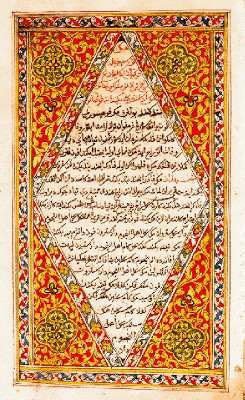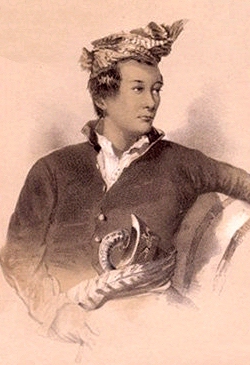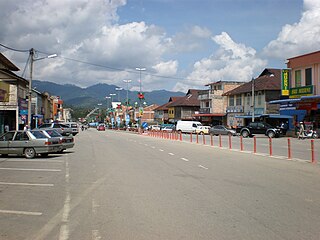Related Research Articles

Perak is a state of Malaysia on the west coast of the Malay Peninsula. Perak has land borders with the Malaysian states of Kedah to the north, Penang to the northwest, Kelantan and Pahang to the east, and Selangor to the south. Thailand's Yala and Narathiwat provinces both lie to the northeast. Perak's capital city, Ipoh, was known historically for its tin-mining activities until the price of the metal dropped, severely affecting the state's economy. The royal capital remains Kuala Kangsar, where the palace of the Sultan of Perak is located. As of 2018, the state's population was 2,500,000. Perak has diverse tropical rainforests and an equatorial climate. The state's main mountain ranges are composed of the Titiwangsa, Bintang and Keledang Ranges, where all of them are part of the larger Tenasserim Hills system that connects Myanmar, Thailand and Malaysia.

The Malay Annals, originally titled Sulalatus Salatin, is a literary work that gives a romanticised history of the origin, evolution and destruction of the Malacca Sultanate. The work, composed in the 17th century by court historians, draws from earlier accounts prior to that century, is considered one of the finest literary and historical works in the Malay language.

The Johor Sultanate was founded by Sultan of Malacca Mahmud Shah's son, Alauddin Riayat Shah II in 1528.

Sultan Ali Iskandar Shah I ibni almarhum Sultan Ahmad Hussein Muazzam Shah I was the 20th Sultan of Johor, who succeeded his father, Sultan Hussein Shah after the latter died of natural causes in 1835. Over the next twenty years, Sultan Ali's claim to being the Sultan of Johor were only recognised by some merchants and a few Malays. Like his father, Sultan Ali was a puppet monarch and played a minimal role in the administrative affairs of the state, which came under the charge of the Temenggong and the British. In 1855, Sultan Ali ceded the sovereignty rights of Johor to Temenggong Daeng Ibrahim, in exchange for formal recognition as the "Sultan of Johor" by the British and a monthly allowance. Following the secession of Johor, Sultan Ali was granted administrative charge over Muar until his death in 1877, and in most administrative matters, was often styled as the "Sultan of Muar".

Pengkalan Hulu, formerly known as Kroh or Keroh, is a town and a mukim in Hulu Perak District, Perak, Malaysia, bordering Thailand and Kedah. The nearest town on the Thailand side is Betong in Yala province.

Sultan Hussein Mua'zzam Shah ibni Mahmud Shah Alam was the 19th ruler of Johor-Riau. He signed two treaties with Britain which culminated in the founding of modern Singapore; during which he was nominally given recognition by the British as the Sultan of Johor and Singapore in 1819 and the Sultan of Johor in 1824.
Tun Muhammad bin Tun Ahmad, better known as Tun Sri Lanang, was the Bendahara of the royal court of the Johor Sultanate who lived between the 16th and 17th centuries. He served under two sultans of Johor, namely; Sultan Ali Jalla Abdul Jalil Shah II (1570–1597) and Sultan Alauddin Riayat Shah III (1597–1615) and also advisers to three rulers of the Aceh Sultanate namely; Sultan Iskandar Muda, Sultan Iskandar Thani (1636–1641) and Sultana Tajul Alam Safiatuddin Shah (1641–1675). He had two honorific titles throughout his lifetime; as the Bendahara of Johor, Bendahara Paduka Raja Tun Mohamad, while he was given the title of Orang Kaya Dato' Bendahara Seri Paduka Tun Seberang after settling in Aceh.
Bendahara Sri Nara Diraja Tun Ali was a Tamil Muslim and the fourth bendahara of the Malacca Sultanate. He was the penghulu bendahari of Malacca before becoming bendahara. He allegedly conspired to assassinate the sultan of Malacca, Raja Sri Parameswara Dewa Shah. According to other sources, Tun Ali and his nephew, Raja Kassim was conspiring to murder Raja Rokan who was disliked by palace officials. It was said that during the attack, Raja Rokan who was with Sri Parameswara stabbed the king in retaliation to an attacker stabbing Raja Rokan. Tun Ali and Raja Kassim was unable to save the king. Tun Ali then installed Raja Kassim as the monarch of Malacca who took the title Sultan Muzaffar Shah. Tun Ali stepped down in 1446 upon the advice of Sultan Muzaffar in favour of Bendahara Paduka Raja Tun Perak.

Sultan of Pahang is the title of the hereditary constitutional head of Pahang, Malaysia. The current sultan is Al-Sultan Abdullah ibni Sultan Ahmad Shah. He is the Head of Islam in the state and the source of all titles, honours and dignities in the state. Historically, the title was also used by rulers of the Old Pahang Sultanate.
Dato' Bendahara Seri Maharaja Tun Habib Abdul Majid was the 19th Bendahara of the Johor Sultanate during the late 17th century. The Johor Sultanate under Sultan Mahmud Shah II saw a gradual decline of royal authority during Tun Habib's tenure as the Bendahara of Johor. Internal challenges within the Sultanate faced by Tun Habib consolidated his power as the Bendahara, in which case the Bendahara monopolised legitimate authority over the Johor Sultanate by the 1690s. After his death, Tun Habib's descendants spanned throughout the Johor Sultanate and established ruling houses in Riau-Lingga, Johor, Pahang and Terengganu.
Sayyid ʿAbdullāh bin Shaykh al-ʿAydarūs was a Hadhrami religious leader who lived in the 16th century and a descendant of Abu Bakr al-ʿAydarūs, a prominent saint who started the al-ʿAydarūs branch of the Bā ʿAlawiyyah clan.
Sultan Abdul Jalil Shah III ibni Almarhum Sultan Alauddin Riayat Shah III was the Sultan of Pahang and Johor who reigned from 1615 to 1617 and 1623 to 1677 respectively. Known as Raja Bujang before his accession, he was a son of the 5th Sultan of Johor, Alauddin Riayat Shah III and a nephew of the 6th Sultan of Johor, Abdullah Ma'ayat Shah. He was the last Sultan of Pahang of the Malacca dynasty to rule Pahang independently from Johor until the independence of the Pahang Kingdom.
Sultan Zainal Abidin Shah ibni Almarhum Sultan Mahmud Shah was the seventh Sultan of Pahang and reigned from 1540 to 1555. He succeeded his elder brother Sultan Muzaffar Shah on his death in 1540.

The Pahang Sultanate also referred as the Old Pahang Sultanate, as opposed to the modern Pahang Sultanate, was a Malay Muslim state established in the eastern Malay Peninsula in the 15th century. At the height of its influence, the sultanate was an important power in Southeast Asia and controlled the entire Pahang basin, bordering the Pattani Sultanate to the north and the Johor Sultanate to the south. To the west, its jurisdiction extended over parts of modern-day Selangor and Negeri Sembilan.

The Kingdom of Reman or Kingdom of Rahman was a landlocked semi-independent Malay kingdom in the northern Malay Peninsula.
Paduka Sri Sultan Muzaffar Shah I ibni Almarhum Sultan Mahmud Shah (1505–1549) was the first Sultan of Perak from 1528 to 1549.
Paduka Sri Sultan Ahmad Tajuddin Shah ibni Almarhum Sultan Mansur Shah I was the third Sultan of Perak. He was the son of the second Sultan of Perak, Mansur Shah I.
Paduka Sri Sultan Mukaddam Shah was the sixth Sultan of Perak. He is the son of the sister of Sultan Ahmad Tajuddin and Sultan Tajul Ariffin Shah, and was the cousin of Raja Kecil Lasa Raja Inu. Before becoming Sultan, he was known as Raja Tua.
Paduka Sri Sultan Alauddin Shah ibni Almarhum Raja Kecil Lasa Raja Inu was the fifth Sultan of Perak. He was the son of Raja Kecil Lasa Raja Inu and grandson of Sultan Ahmad Tajuddin Shah.
Sultan Mansur Shah II ibni Almarhum Raja Kecil Lasa Raja Inu was the seventh Sultan of Perak. He was the brother of the fifth Sultan of Perak, Sultan Alauddin Shah, and grandson of Sultan Ahmad Tajuddin Shah.
References
- ↑ Kim, Khoo Kay (1983). "Succession to the Perak Sultanate". Journal of the Malaysian Branch of the Royal Asiatic Society. 56 (2). Malaysian Branch of the Royal Asiatic Society: 8. JSTOR 41492955.
- ↑ Winstedt, R. O.; Wilkinson, R. J. (June 1934). "A History of Perak". Journal of the Malaysian Branch of the Royal Asiatic Society. 12 (1). Malaysian Branch of the Royal Asiatic Society: 9. JSTOR 41559831.
- ↑ Winstedt, R. O.; Wilkinson, R. J. (June 1934). "A History of Perak". Journal of the Malaysian Branch of the Royal Asiatic Society. 12 (1). Malaysian Branch of the Royal Asiatic Society: 125. JSTOR 41559831.
- 1 2 3 4 5 6 7 8 9 10 "Sultan Mansur Shah". Sultan-Sultan Perak. Pejabat D.Y.M.M. Sultan Perak Darul Ridzuan. 2005. Archived from the original on 2012-02-20. Retrieved 28 August 2022.
- 1 2 3 4 5 6 7 8 9 10 Jasbindar, Freddie Aziz (17 January 2020). "Sultan Mansur Shah I (Sultan Perak ke 2)". www.orangperak.com. Retrieved 2022-08-28.